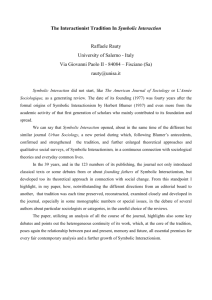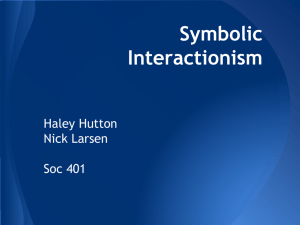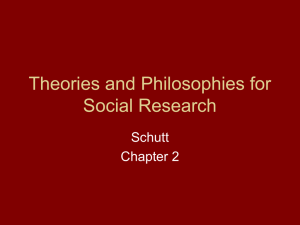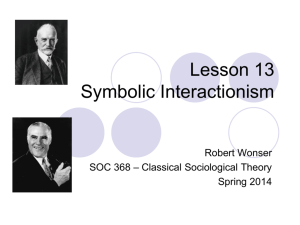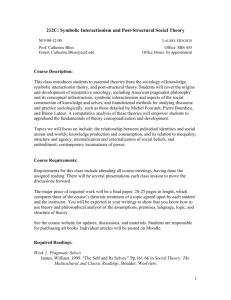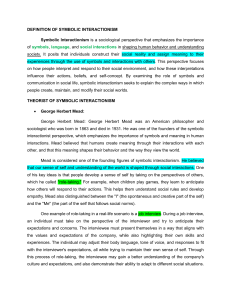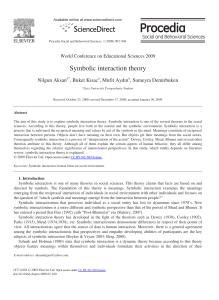Symbolic Interactionism
advertisement
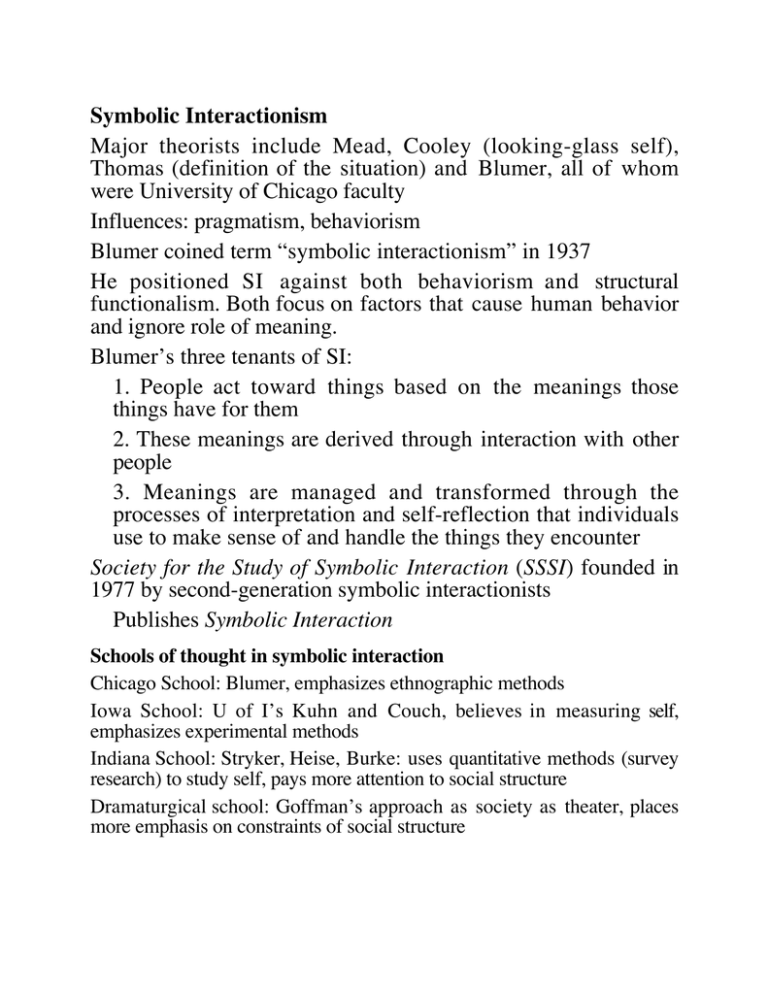
Symbolic Interactionism Major theorists include Mead, Cooley (looking-glass self), Thomas (definition of the situation) and Blumer, all of whom were University of Chicago faculty Influences: pragmatism, behaviorism Blumer coined term “symbolic interactionism” in 1937 He positioned SI against both behaviorism and structural functionalism. Both focus on factors that cause human behavior and ignore role of meaning. Blumer’s three tenants of SI: 1. People act toward things based on the meanings those things have for them 2. These meanings are derived through interaction with other people 3. Meanings are managed and transformed through the processes of interpretation and self-reflection that individuals use to make sense of and handle the things they encounter Society for the Study of Symbolic Interaction (SSSI) founded in 1977 by second-generation symbolic interactionists Publishes Symbolic Interaction Schools of thought in symbolic interaction Chicago School: Blumer, emphasizes ethnographic methods Iowa School: U of I’s Kuhn and Couch, believes in measuring self, emphasizes experimental methods Indiana School: Stryker, Heise, Burke: uses quantitative methods (survey research) to study self, pays more attention to social structure Dramaturgical school: Goffman’s approach as society as theater, places more emphasis on constraints of social structure Becker, Howard. 1953. “Becoming a Marihuana User.” American Journal of Sociology 59:235–242. Research method: participant observation, 50 interviews Premise: Any behavior (e.g., marihuana use for pleasure) requires acquiring particular meanings through social experiences Three stages in developing meaning of marihuana as drug used for pleasure 1. Learning to smoke drug so that it will have a real effect I was smoking like I did an ordinary cigarette. He said, “No, don’t do it like that.” He said, “Suck it you know, draw in and hold it in your lungs till you… for a period of time.” I said, “Is there any limit of time to hold it?” He said, “No, just till you feel that you want to let it out, let it out.” So I did that three or four times. 2. Learning to recognize the effects and connect them to drug use They were just laughing the hell out of me because like I was eating so much.… Sometimes I’d be looking at them, you know, wondering why they’re laughing, you know, not knowing what I was doing. … I come back, “Hey, man, what’s happening?” Like, you know, like I’d ask, “What’s happening?” and all of a sudden I feel weird, you know. “Man, you’re on you know. You’re on pot.” I said, “No, am I?” Like I don’t know what’s happening. 3. Learning to enjoy the sensations that are perceived Well, they get pretty high sometimes. The average person isn’t ready for that, and it is a little frightening to them sometimes… and they don’t know what’s happening to them.… You have to like reassure them, explain to them that they’re not really flipping or anything, that they’re gonna be all right. You have to just talk them out of being afraid.… And come on with your own story, you know: “The same thing happened to me. You’ll get to like that after awhile.” Keep coming on like that; pretty soon you talk them out of being scared.

